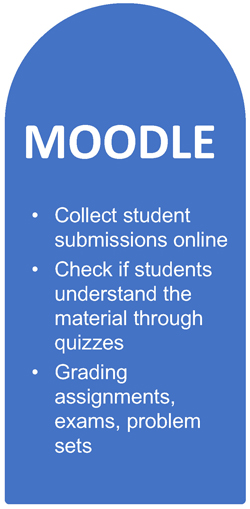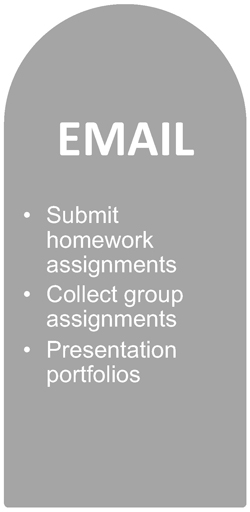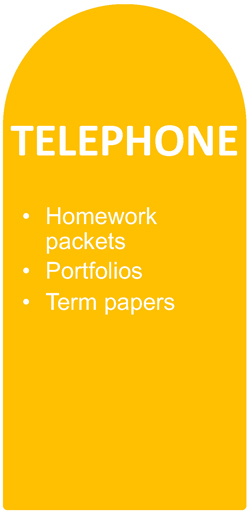FIRST DAY OF TEACHING ONLINE
This guide provides you with the key actions and resources to help you make the shift to online teaching as quickly and seamlessly as possible.
Login into Moodle and complete the following task on the first day of online teaching for each of your courses.
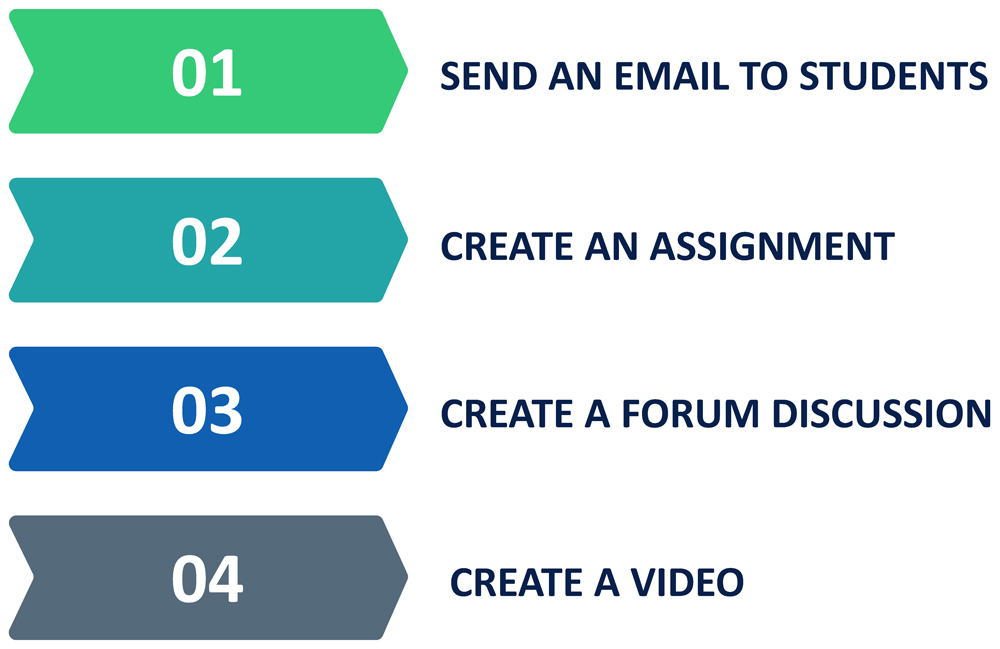
1. SEND AN EMAIL TO STUDENTS
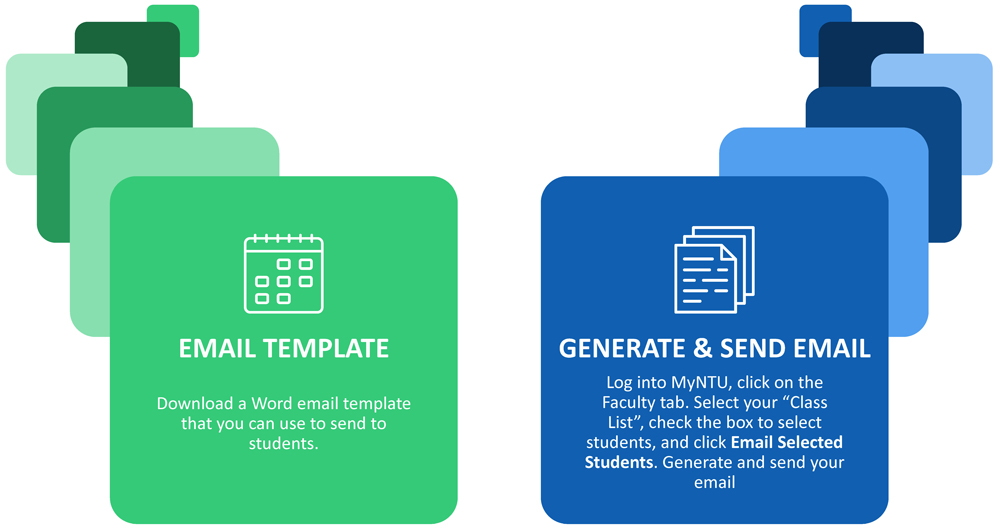
2. CREATE AN ASSIGNMENT
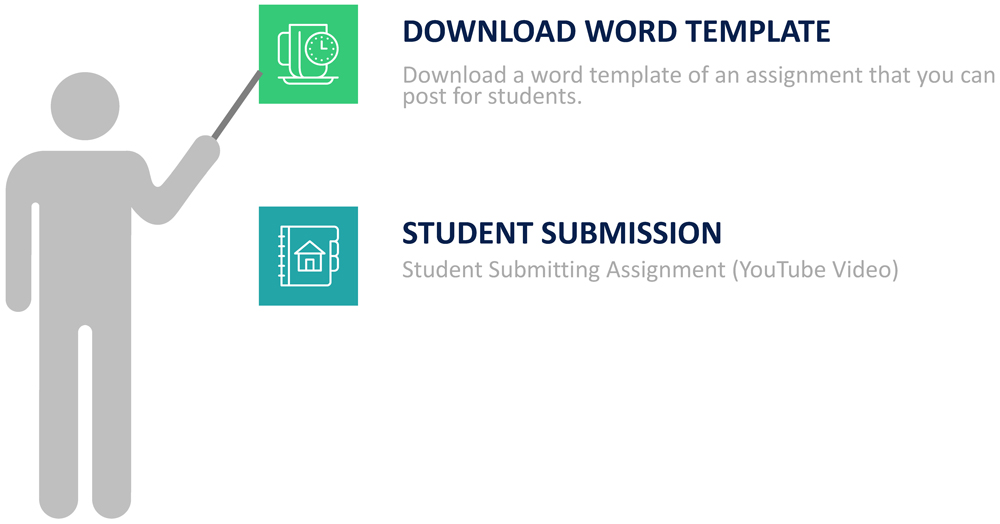
3. CREATE A FORUM DISCUSSION
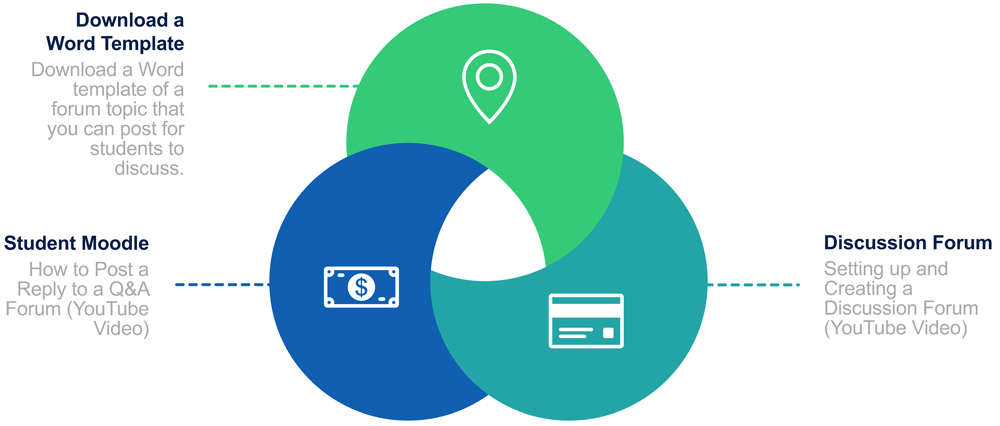
4. CREATE A VIDEO
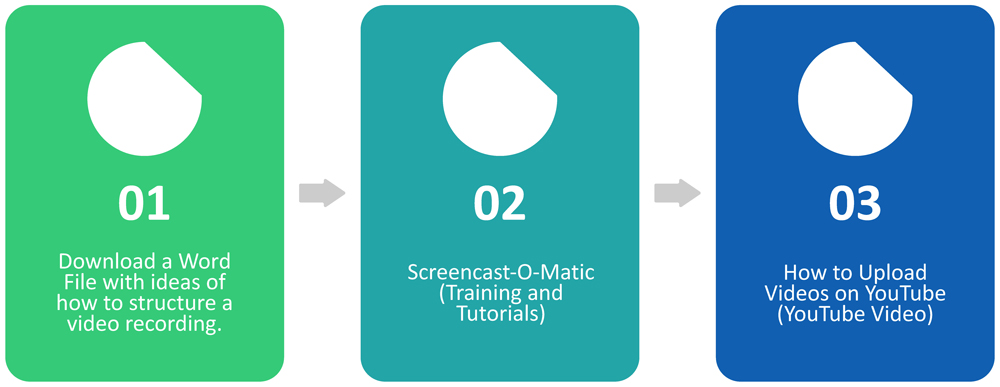
MOODLE FOR FACULTY
All faculty are assigned two Moodle Training courses. All courses have a course shell and automatically assign students and faculty to their course.
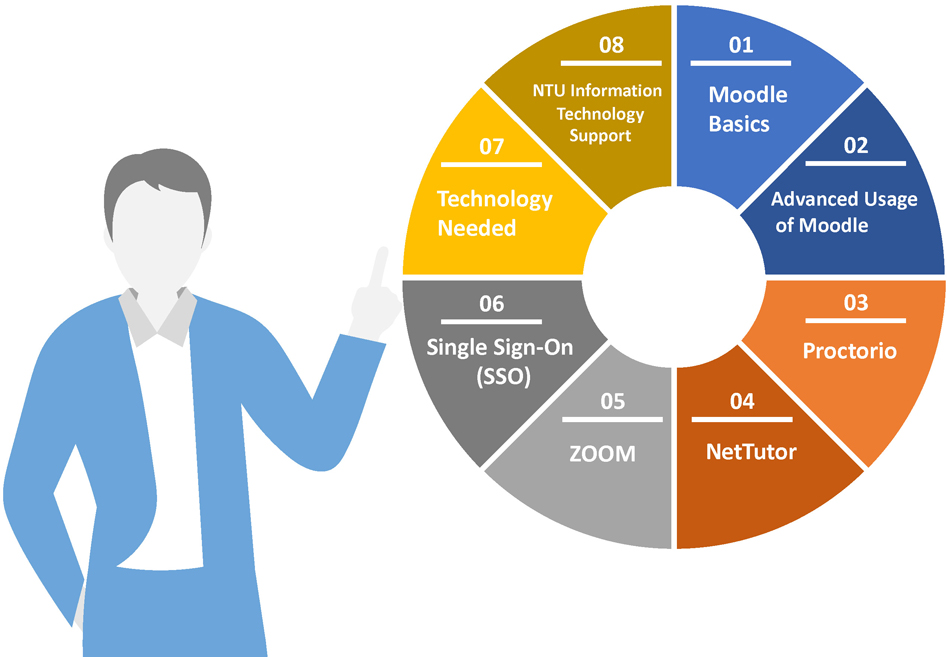
MOODLE BASICS - v3.7
The goal of this course is to provide instructors with an understanding of basic functionality in the Moodle Learning Management System (LMS)
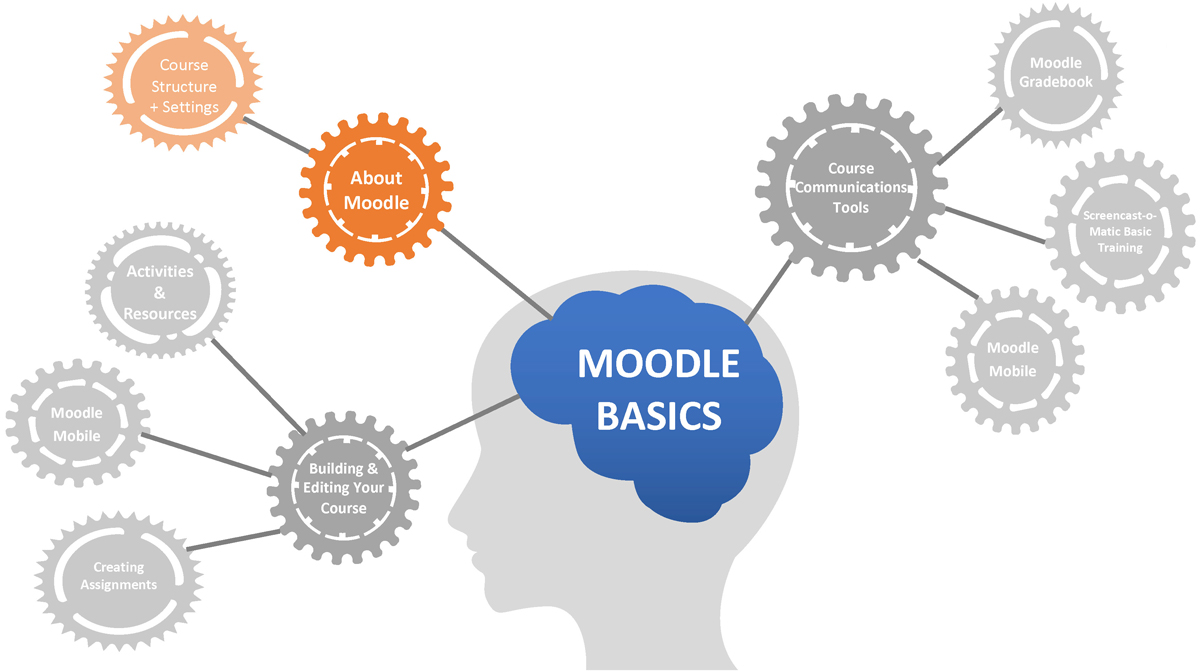
ADVANCED USAGE OF MOODLE - v3.7
The goal of this course is to provide instructors with training in some more advanced areas of the Moodle Learning Management System.
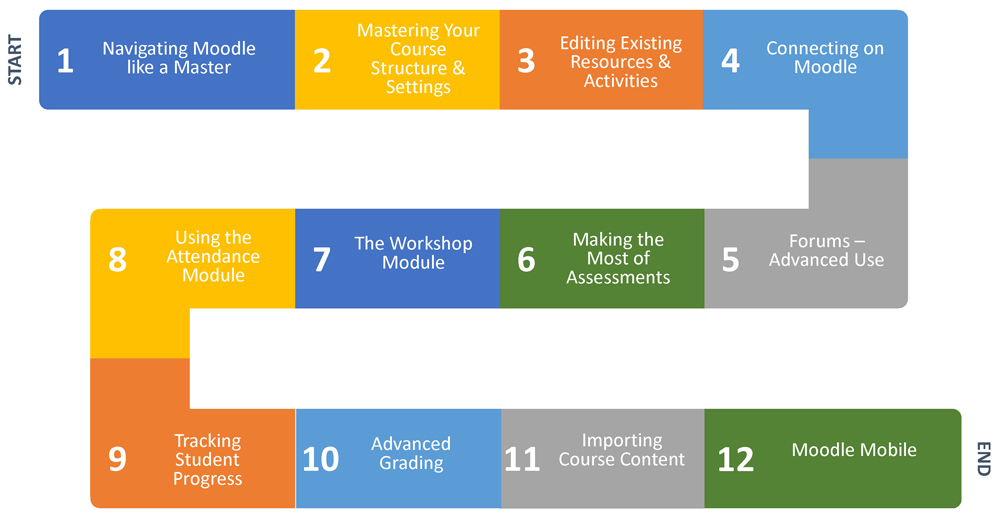
PROCTORIO - ACCESS THROUGH MOODLE
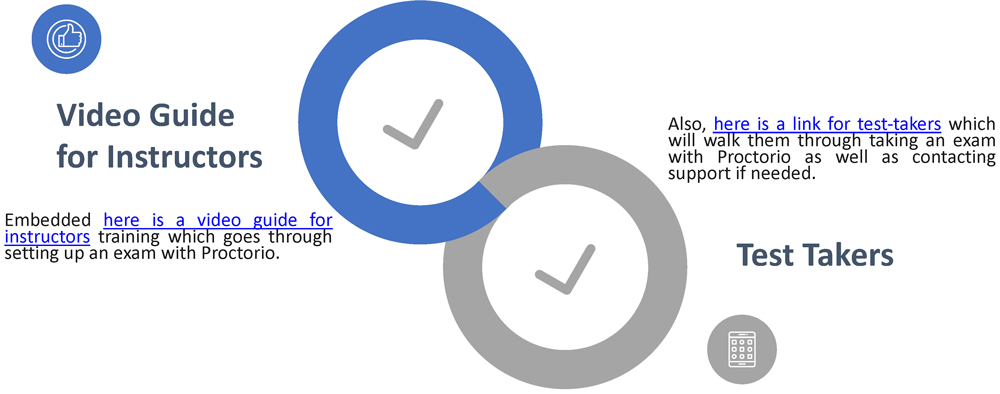
NetTutor
Online tutoriing tool for all subject areas and a writing center.
 |
Subjects Accounting, Biology, Chemistry, Physics, Humanities, and Social Sciences, Math, Computer Science, Foreign Languages, Nursing, and Allied Health, and Online Writing |
|
|
How to Use NetTutor: https://youtu.be/Vq6J84Sv2ro |
|
|
Uploading a Paper in NetTutor NetTutor: https://youtu.be/ZiJZAurEd_o |
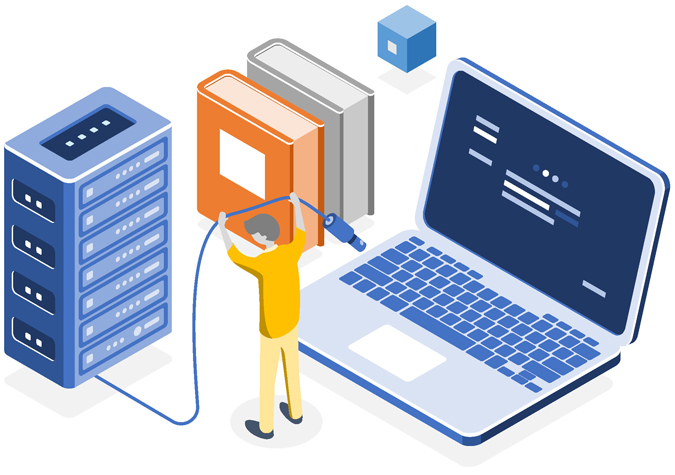
ZOOM
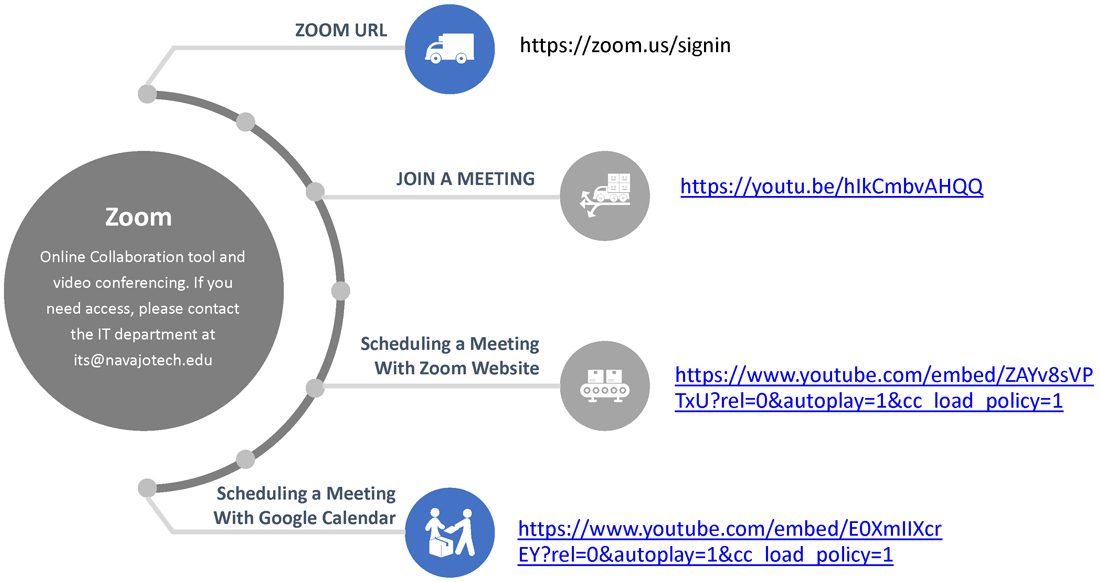
Single Sign-On (SSO) LOGIN
 |
IMPORTANT NOTE For faculty that have not logged into NTU email, MyNTU or Moodle: NTU has migrated to a Single Sign-On (SSO) implementation to bring Email, Moodle, and MyNTU accounts under one login. Download the SSO Login Instructions. If login issues persist, please contact the IT Department at 505-786-4208 or email its@navajotech.edu |
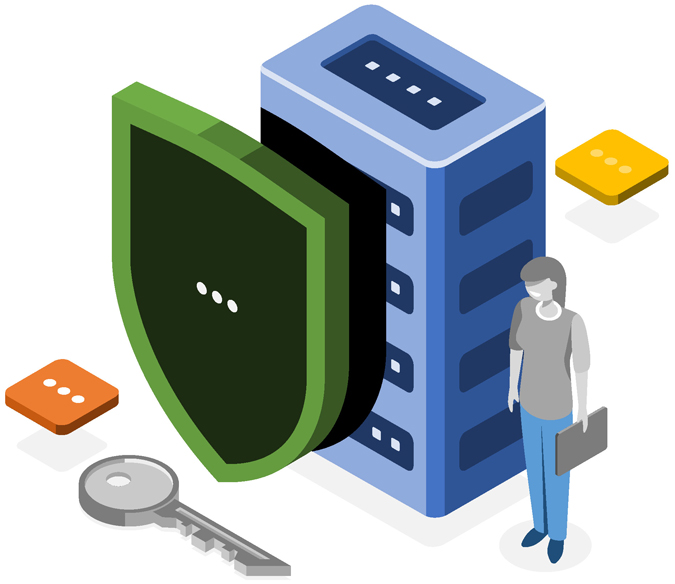
TECHNOLOGY NEEDED

NTU INFORMATION TECHNOLOGY SUPPORT

Moodle Assistance:
If you have questions about Moodle, please email ccarviso@navajotech.edu
NTU Information Technology Support:
Contact Information:
Navajo Technology University Information Technology Department
Phone: 505-786-4208
Email: its@navajotech.edu
STRATEGIES AND TOOLS FOR TEACHING REMOTELY
 |
COMMUNICATE WITH STUDENTS Indicate to students ahead of time how you intend to communicate. Explain how you expect students to contact you and the timeframe they can expect responses. |
 |
RECORDING LECTURES Instructors can hold zoom meetings and record lecture for students who can’t make it at the designated time. |
 |
ASKING & RESPONDING TO QUESTIONS Allow students to participate in online class discussions, exchange ideas in writing or ask questions about your lectures. |

 |
LIVE ONLINE SESSIONS AND OFFICE HOURS Zoom is available for online sessions with your whole class or meet with groups or individual students. |
 |
DISTRIBUTING CLASS MATERIALS If you have documents, problem sets, homework or readings, you can post them on Moodle to organize your materials to make it easy for students to find them or provide homework packets. |
 |
EXAMS AND ASSIGNMENTS If your students need to take an exam, test or quiz, you can use the Moodle platform. |
EIGHT TIPS TO TRANSITIONING TO ONLINE TEACHING
4. KNOW TECHNOLOGY FAQS
Partner with IT to determine the top five to six technical issues that students are likely to encounter when accessing a course online. This may be a forgotten password, a pop-up blocker, or a browser issue. Educate yourself on these issues.
3. HIGH INSTRUCTOR PRESENCE
High “instructor presence”- the feeling that an instructor is still present in an online educational experience - is more critical now than it has ever been.
2. USE TECHNOLOGY
Don’t confuse technology with teaching. The goal is to use technology to facilitate engaging and effective teaching and learning.
1.BE A LEARNER
You’re used to being an expert, but now you may be facing a situation where you aren’t an expert. For most of your students, taking all their classes fully online will be a new experience. If it’s new to you as well, don’t be afraid to let your students know that you are learning with them.

5. PROMOTE ENGAGEMENT
yourself if your expected learning outcomes will be achieved. Avoid the trap of choosing “coverage” over engagement.
6. UPSKILL, UPSKILL, UPSKILL
Just as you shouldn’t overemphasize the role of technology in this educational moment, you don’t want to underplay it either. Everyone (faculty, staff, and students) will need to upskill themselves in educational technology quickly.
7. SURVEY OFTEN AND EARLY
Survey your students about how it is going early into your tenure as a remote instructor. Quick surveys are a way to take the temperature of the room, a sense of a meeting.
8. KEEP IT SIMPLE
Think of your first online course. Remember that the first time out of the gate won’t be perfect.
FACULTY DISTANCE LEARNING STRATEGIES
Tools to help you move your classes online, engaging students in distance learning, and meet course learning objectives.

|
|
COMMUNICATE WITH STUDENTS Clear, consistent communication is an important part of successful online teaching. Your students will need information about how your class is changing and what they are expected to do. Learn to combine these communication strategies into a holistic online teaching approach. |
|
|
DELIVER YOUR COURSE CONTENT There are a range of ways to share course content with your students, depending on whether you want or need, to meet in real-time or not. |
|
|
ASSESS STUDENT LEARNING Online tools can provide additional ways for students to demonstrate their learning. These tools help you collect student work online, create quizzes and exams and grade digital submissions. |
COMMUNICATE WITH YOUR STUDENTS
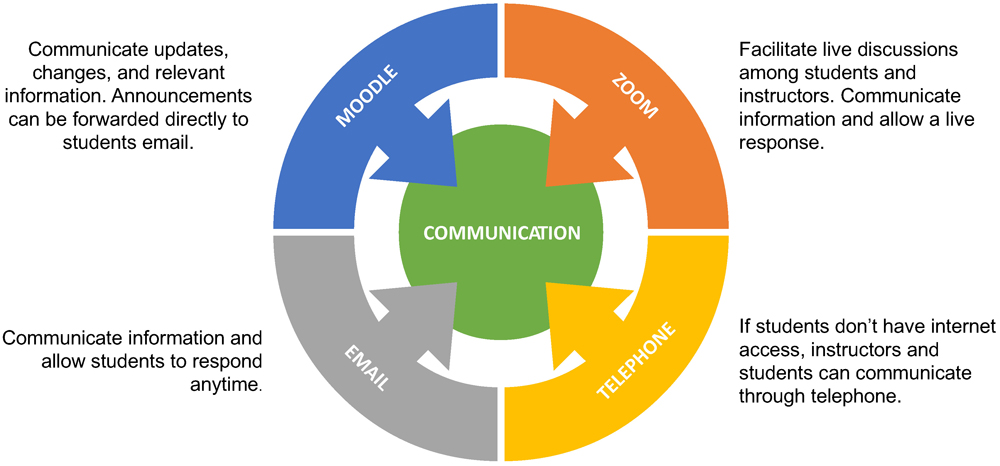
DELIVER YOUR COURSE CONTENT
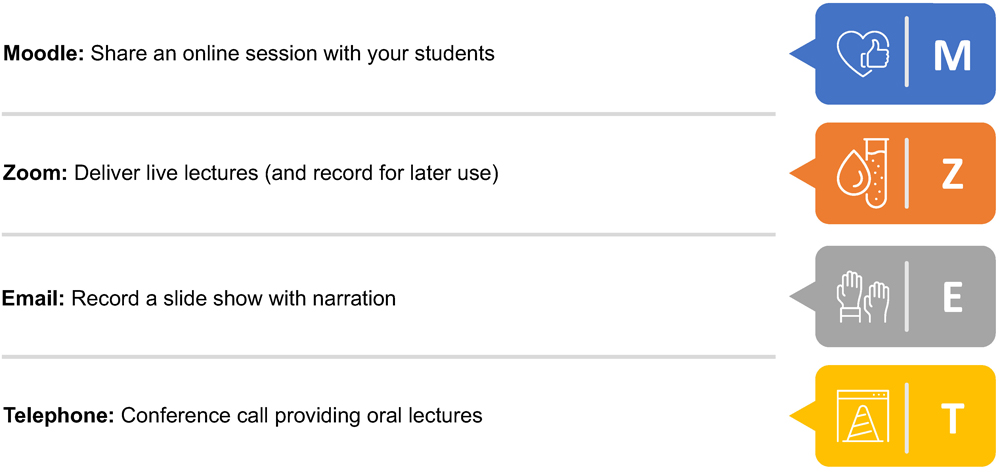
ASSESS STUDENT LEARNING
